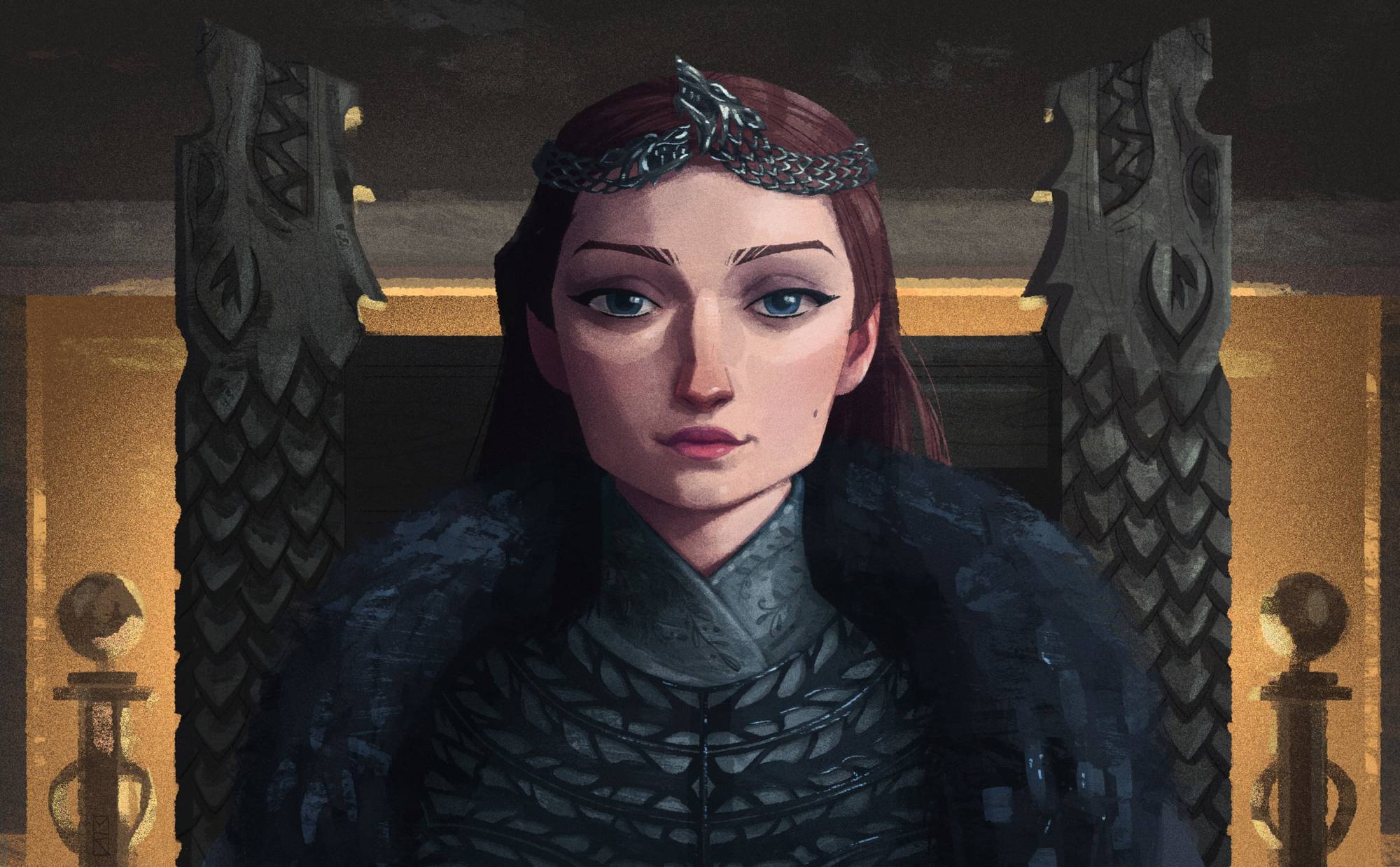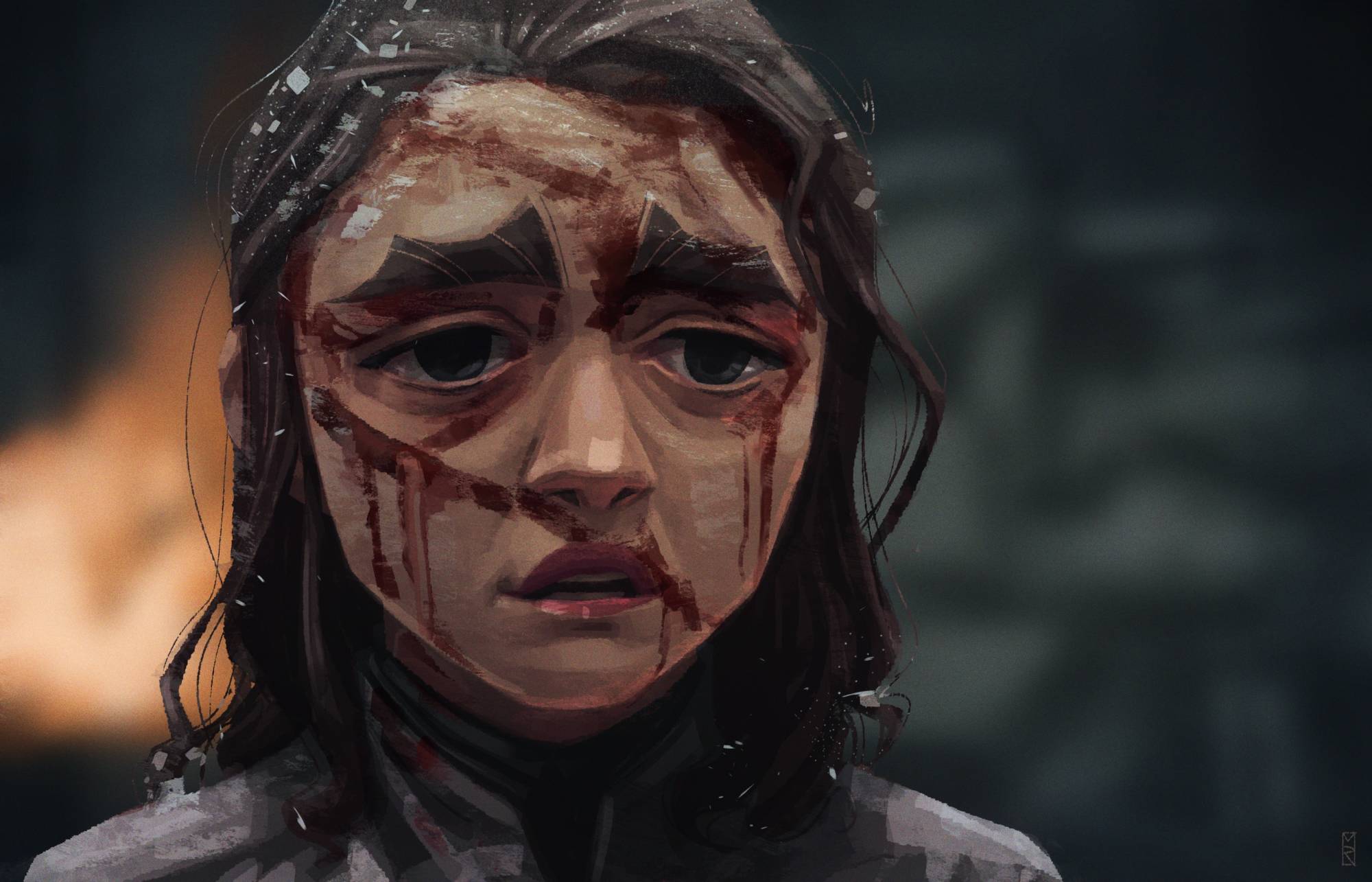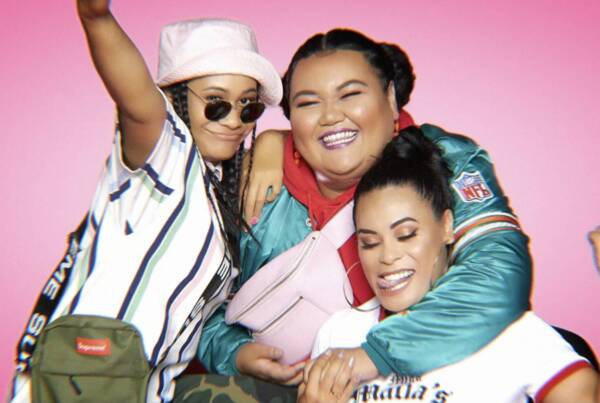Writing by Hannah Forsdike // Illustrations by Meybis Ruiz // Feminine strength is a prevalent topic in the series, and could not be better demonstrated than through Arya and Sansa Stark.
Writing by Hannah Forsdike // Illustrations by Meybis Ruiz
Although I wouldn’t call HBOs Game of Thrones a feminist revolutionary, the show has given us a generous serving of girl power moments and story arcs over its eight season, through a diverse range of female archetypes. Not all of it was as blatant as Brienne of Tarth (or should I say, Sir Breane of Tarth) fighting men and bears alike, or Margaery Tyrell’s master manipulation, or Daenerys laying waste to armies from the back of a dragon. But no one better exemplifies the range of female strength and endurance than Arya and Sansa Stark.
The male dominated structure of the earlier seasons has almost completely flipped when we look at the lineup of women in power in the shows final episodes. This change wasn’t sudden, there has been consistent movement shifting the power from men to women throughout the series.
Not only did men dominate the power structure of the earlier seasons, the women were actively oppressed. Female characters were sold into marriage like livestock, raped, and abused. They were treated like property, and used like pieces on a game board to further the ambitions of the men around them. Along side this, gender roles were prevalent. Traditional femininity was celebrated, and women who broke this mould were established as separate from the feminine standard. This juxtaposition is seen in the Stark sisters in the first season. Sansa is the pinnacle of feminine grace and a picture perfect example of what a high born lady should be. She is presented as beautiful and elegant, her hair is always done in some kind of fancy hairdo, which is often an homarge to the elegant women she looks up to. I could honestly write a manifesto on Sansa Stark’s hair style progression throughout the show. She starts off imitating her aunt, Lyanna, who was known as a great beauty. She goes on to copy the southern updo that Cersi wears, and later the more relaxed, romantic Tyrell hairstyle. She is always dressed in soft coloured gowns embellished in flowers and beads; there is an iconic scene in the pilot episode when the Stark family are lined up to greet King Robert, Sansa wears a light blue gown, standing out from the rest of her family who are all dressed in dark colours. In the first season Sansa is celebrated for her embroidery skills and complimented for her beauty. She is a clear shoe in to marry the young prince and mother future princes and princesses, a dream come true for any highborn lady. Arya, her younger sister, opposes this in almost every way. She activity fights against what is expected of her as a little lady, and like Sansa, this attitude is reflected in her appearance. Her hairstyles and wardrobe are much more practical than Sansa’s. As a nod to her future as a great fighter, she is even depicted in the first episode wearing a helmet she has stollen from a soldier, the depiction of the young girl wearing armor definitely foreshadows the archetype she goes on to embody. This also foreshadows the position of women in the later seasons, many of whom move away from flowing gowns and dress in a more armor inspired fashion. Once moving south to the capital, were she might be expected to dress even more like a lady of court, Arya starts wearing pants and dressing more masculine. So much so, that she can easily pass as a boy when she needs to flee Kings Landing. But it isn’t just that she is dressing like a “boy”, there is an apparent lack of effort in the way she dresses, which nicely opposes the care Sansa takes in her appearance.
In the pilot episode when her brothers are practicing archery, Arya sneaks up behind them and shoots an arrow perfectly into the bullseye, they all laugh as she runs off, establishing herself as a misfit amongst her sister and her brothers. She doesn’t fit into either category. Setting up her story arc, and foreshadowing the shift in power to women in the later seasons, Arya’s father, Ned Stark (remember him?), decides to foster her desire to learn to fight and finds a sword master to teach her. Even this is laced with stigma, as he refers to her the sword master as her “dancing teacher”.
The two sisters story lines diverge at the end of the first season. Sansa is trapped in the capital where she is betrothed to the boy who sentenced her father to death, and Arya is smuggled out of the city in disguise. Her hair being cut off roughly to make her look like a boy is a symbolic moment of Arya shedding her past life, which will never be the same. In many ways, both Arya and Sansa are required to wear a disguise in order to survive after their fathers death, however these disguises couldn’t be more opposite. Sansa has to fit in as a lady of court while Arya is pretending to be a boy to safely travel north. This establishes the very different journeys the two girls embark on. And will not be the only time they are both required to disguise themselves.
Both girls journeys lead to them becoming the strong and powerful women we know them as in the final season. Sansa plays a game of politics, manipulation, and strategy in order to survive. But don’t mistake her strong femininity as a weakness. After her own escape from the Lannisters, Sansa is seemingly passed around by another man, Little Finger, who seems to be manipulating her naivety. Through ever hard lesson, she becomes smarter and more powerful, even manipulating Little Fingers attraction towards her. And as a physical representation of this, we see her characters wardrobe change, to the dark, almost armor inspired costume she wears now. There is a moment at the end of season four when Sansa first reveals her new, darker look. She has dyed her hair black to conceal her identity, and she is donning a large piece of jewellery on her chest. Many people see this as her first piece of armor, protecting her heart. Sansa curses herself for the mistakes she made when she was young, she often followed her heart rather than her head, making her an easy target of manipulation. To me this piece of armor was a symbol that she would never again make a foolish choice out of love, which is a throwback to a piece of advice Cersei gives her in the second season. She stands by this right up until the final season, when she questions if Jon only swore allegiance to Daenerys because he was in love with her.
In the later seasons, Sansa even wears her house sigil of a direwolf on her clothing. This shows a large amount of growth in her character from season one, the young girl who couldn’t wait to leave her family behind, travel south and marry a prince.
When she is reunited with her brother (or rather her cousin) Jon, the two decide to retake their ancestral home from the man who had forcibly married and raped Sansa. Jon, being well versed in warfare, refuses to take Sansa’s advice in facing this enemy. In ignoring her warnings about the emotional warfare he will enact the battle is all but lost, until Little Fingers army comes to their aid at her call. And with this victory, Sansa is given the satisfaction of killing her rapist, destroying along with him, any weakness remaining in her. I love the little that smile grows across her face as she leaves him to be eaten alive by his own hounds.
Arya’s journey to strength is a little more straight forward. She abandons her femininity when she leaves Kings Landing, literally dressed up as a boy. But her plans to make it home go array. She ends up traveling with The Hound for sometime, and the pair become infamous for killing anyone in their path. The duos physicality is almost comical, The Hound being a huge knight with a severely burnt face, and Arya being an extremely petite young girl. When they become separated, Arya travels across the sea and trains to become an assassin, where her skills are honed and she does in fact become a very talented fighter, developing greatly from the clumsy killer she was on the road with The Hound. Her arc began with her trying to be something she wasn’t and literally disguising herself, during her training at the House of Black and White she learns the art of changing her face, a throwback to her earlier storylines. She returned home to seek revenge on everyone who hurt her family, starting with Walder Frey, an older man who betrayed her mother and brother. To see her smiling while she artfully kills this man is a pinnacle point for the viewer. Although Arya’s skills and character have developed slowly throughout the show, this moment establishes how far she has come. It also creates a link between her and Sansa, who also smiled upon killing Ramsey Bolton.
Arya and Sansa’s story lines finally collide, as they meet again at Winterfell in season seven. Little Finger attempts to manipulate them and turn them against each other, just as he had done with their mother and her sister. Game of Thrones has portrayed women both in rivalry and in support of one another; a large part of Cersei’s character arc is centered around a prophecy of a younger and more beautiful queen who will cast her down, however through Daenerys and Missandei we see a deep and loving female friendship. In the case of Arya and Sansa, the writers momentarily lead viewers to believe the two will turn on each other, a grossly overused trope were two powerful females couldn’t possibly be allies. But instead the two come together in bringing Little Finger to justice, Arya cuts his throat as he begs Sansa to spare him. From here Sansa is quickly praised for her leadership, instead of her embroidery skills. And we see her fights to establish the north as an independent kingdom and become Queen of the North, which was my absolute favorite resolution in the series finale.
Although Arya is still the more cut throat of the pair, literally, a small glimpse of her femininity shines through her relationship with Gendry. However, this girl-like crush is flipped when they are reunited in the final season. Unlike many of the other female characters on the show, Arya takes her sexuality into her own hands when she propositions Gendry at the prospect of possible death. Sex is often used as a weapon against women in this world, and a display of confidence in the face of sexuality has been established as a sign of female strength throughout the show.
Despite being a fan favorite, Arya never seemed a likely candidate to destroy the Night King, the underlying threat throughout course of the series. From the first season a prophecy of the ‘Prince who was Promised’ had viewers speculating which male character would kill the Night King in the end. However in season seven it’s revealed that the word used for ‘prince’ in the prophecy is not attached to gender, meaning it could be a man or a women that would end the long night. The immediate and obvious ringer for this was Daenarys, but despite this revelation many still believed Jon Snow was the prince in the prophecy. This made the reveal that it was Arya who would ultimately save the realm an even greater feminine victory; after it was revealed that the prophecy could apply to a woman, there was still little doubt that the prince was anyone but Jon.
Feminine strength is a prevalent topic in the series, and could not be better demonstrated than through Arya and Sansa Stark. Fantasy as a genre is no stranger to an empower woman, however I must commend Game of Thrones for giving us so many diversely strong female characters.








